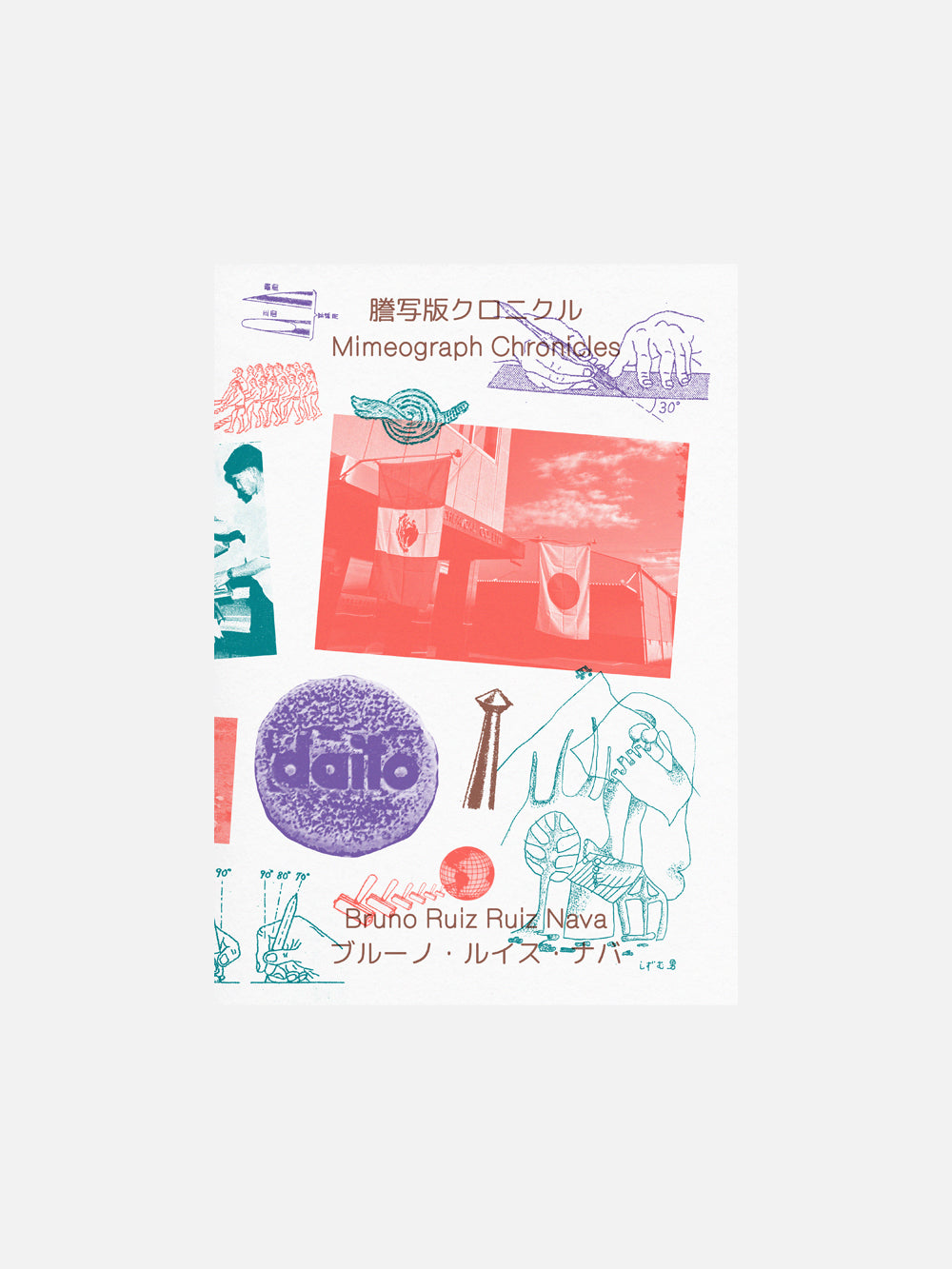
"This publication is part of the result of research on the origin and uses of the mimeograph, or gariban and toshaban as it is known in Japan. During a three month residency at the Fukuoka Asian Art Museum, I had the opportunity to visit the Daito Tosha-Technical Archive Museum in Gifu Prefecture. This museum exhibits the extensive collection and history of the mimeograph.
The mimeograph was originally conceived as a printing machine, introduced by Edison at the World's Fair in Chicago (USA) in 1893. But his Japanese colleague Shinjiro Horiiwas also an essential part of this discovery, since Horii invented stencil paper, which is needed for the use of this machine.
This tool is a very simple portable printing press, made of wood in the shape of a briefcase, which contains a frame with mesh and a roller inside. The briefcase only weighs a couple of kilos and can be transported very easily.
The mimeograph was the ideal printed medium for small organizations: schools, offices and, notably, political organizations. These devices increase the capacity for mobility and autonomy.
The mimeograph is a forgotten tool often considered obsolete worth recovering as it favors experimentation and revival of collective effort."